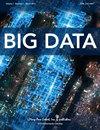使用微调的MobileNet架构对浅色和深色个体皮肤上的紫绀图像进行分类和检测
IF 2.6
4区 计算机科学
Q2 COMPUTER SCIENCE, INTERDISCIPLINARY APPLICATIONS
引用次数: 0
摘要
使用体内和计算机图像处理方法对紫绀进行分类和检测是非常有趣和特殊的。在这项研究中,引入了一种外围和中心紫绀图像分类方法,该方法使用轻量级深度学习卷积神经网络(cnn),称为预训练的MobileNet架构。该改进的MobileNet模型使用从多个紫绀发表的数据集中收集的1300张图像的认可数据集进行评估。在训练数据集上应用增强技术来提高生产率。强调结果,训练和测试数据集上的验证精度和准确度分别为95%和97%;与先前研究中获得的简单卷积神经网络(scnn)和微调VGG16模型的验证准确率分别为79%和82%相比,获得的验证准确率更高。本文章由计算机程序翻译,如有差异,请以英文原文为准。
Classification and Detection of Cyanosis Images on Lightly and Darkly Pigmented Individual Human Skins using a Fine-Tuned MobileNet Architecture
The classification and detection of cyanosis using in-vivo and in-silico image processing approaches are intriguing and very special. In this study, a peripheral and central cyanosis image classification approach, using lightweight-deep learning Convolutional Neural Networks (CNNs), referred to as pre-trained MobileNet architecture, was introduced. This modified MobileNet model was assessed using the sanctioned dataset of 1300-image collected from multiple cyanosis published datasets. The augmentation technique was applied on the training dataset to enrich the productivity. Emphatic results, validation-accuracy and accuracies on the training and test datasets of 95% and 97%, respectively; were obtained as compared to the validation-accuracy of 79% and 82% of the Simple Convolutional Neural Networks (SCNNs) and Fine-tuned VGG16 models attained from prior stud.
求助全文
通过发布文献求助,成功后即可免费获取论文全文。
去求助
来源期刊

Big Data
COMPUTER SCIENCE, INTERDISCIPLINARY APPLICATIONS-COMPUTER SCIENCE, THEORY & METHODS
CiteScore
9.10
自引率
2.20%
发文量
60
期刊介绍:
Big Data is the leading peer-reviewed journal covering the challenges and opportunities in collecting, analyzing, and disseminating vast amounts of data. The Journal addresses questions surrounding this powerful and growing field of data science and facilitates the efforts of researchers, business managers, analysts, developers, data scientists, physicists, statisticians, infrastructure developers, academics, and policymakers to improve operations, profitability, and communications within their businesses and institutions.
Spanning a broad array of disciplines focusing on novel big data technologies, policies, and innovations, the Journal brings together the community to address current challenges and enforce effective efforts to organize, store, disseminate, protect, manipulate, and, most importantly, find the most effective strategies to make this incredible amount of information work to benefit society, industry, academia, and government.
Big Data coverage includes:
Big data industry standards,
New technologies being developed specifically for big data,
Data acquisition, cleaning, distribution, and best practices,
Data protection, privacy, and policy,
Business interests from research to product,
The changing role of business intelligence,
Visualization and design principles of big data infrastructures,
Physical interfaces and robotics,
Social networking advantages for Facebook, Twitter, Amazon, Google, etc,
Opportunities around big data and how companies can harness it to their advantage.
 求助内容:
求助内容: 应助结果提醒方式:
应助结果提醒方式:


